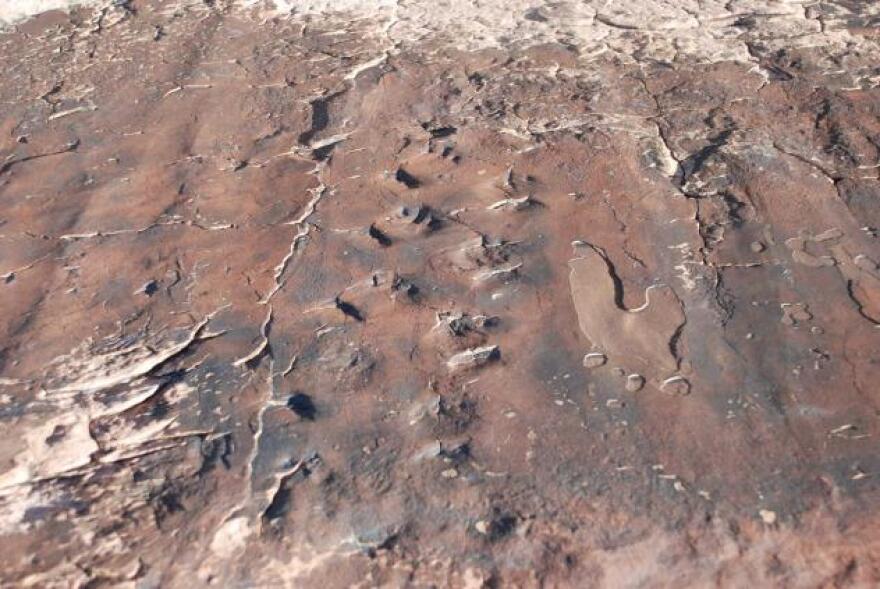Hundreds of millions of years ago, a reptile about the size of a baby crocodile marched across wet mud in an area we now know as Gold Butte.
Today, UNLV geology professor Steve Rowland and his students are studying those fossilized footprints.
They don’t know exactly what the creature was, but they do know the tracks predate dinosaurs.
Tom Cluff, an avid hiker and friend of Rowland's, discovered the tracks.
“We didn’t expect to find them in a rock formation approximately 100 million years older than the tracks we had already been working on,” Rowland said.
Rowland said he and fellow researchers can infer the timeline based on the age of the rock formation the tracks appear on.
“This trackway occurs shortly after reptiles first evolved,” he said.
Trackway at Gold Butte/Photo courtesy: Steve Rowland
Rowland said the animal was living around the time when when reptiles first started to adapt to living on land and started laying eggs that didn't require them to be in water.
The tracks can tell researchers a lot about how the animal walked, how big it was and how it behaved, but they don't reveal much about what it ate, where it made its home and how it died.
But Rowland said they do know a lot about the environment it lived in, during what is known as the Permian period. The continents were still fused in what is known as the super-continent Pangea.
During that time, Gold Butte was the edge of a giant sea. It was mostly low lying tidal flats with low sand dunes and some bushes, but no mountains.
Rowland said Gold Butte shares the same rock layer as Red Rock National Conservation Area and Valley of Fire State Park, but it's been understudied.
He says newly found tracks and other trackways discovered in the area are just one of the reasons it should be protected.
“I think it helps underscore the fact that Gold Butte is a very valuable area scenically, geologically, botanically, archeologically," Rowland said. "It is an extremely rich area in resources in all those areas and it does in my opinion warrant some sort of special protective status,” he said.
Steve Rowland, paleontologist and geology professor, UNLV









